Lounge Chair
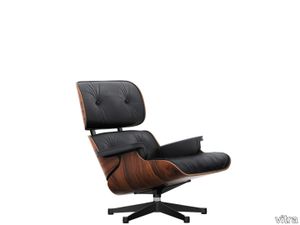
vitra > Chair
The Lounge Chair by Charles and Ray Eames is one of the great furniture designs of the twentieth century. Offering ultimate comfort, this elegant chair has been produced by Vitra since the 1950s using virtually the same production techniques and high-quality materials. The Lounge Chair comes in two sizes and various combinations of leather or fabric upholstery covers, wooden shells and bases.
Miniatures .02
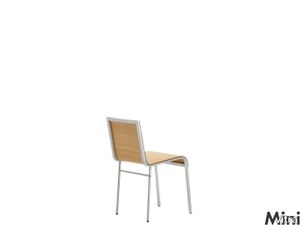
vitra > Styling
Belgian designer and interior architect Maarten Van Severen was an idiosyncratic figure on the international design scene. His work was noted for its intense engagement with a few basic furniture types, such as the chair, table, chaise longue, shelving and cabinet, for which he developed fundamental solutions. <br/><br/>Like Jean Prouvé, Van Severen regarded his experiments in the workshop and his close physical contact with the materials to be a vital element of the design process. This was the reason why, up until the mid 90s, when he started working with industrial partners, he produced all his designs in the workshop that he had set up in 1987. <br/><br/>This included the CNº II chair (later .02), introduced in 1992. This chair, with its simplicity of form, has a seat and backrest crafted from a continuous piece of material – a sheet of aluminium or thin plywood – set on an aluminium base. The CNº II formed the basis for his subsequent collaboration with Vitra to develop the .03 chair, which was introduced to the market in 1998 and marked his international emergence as a designer.
Ceramic Container No. 2

vitra > Styling
The hand-glazed Ceramic Containers (1952) derive from the original lathe-turned wooden objects by Alexander Girard. Their silhouettes are reminiscent of the traditional shapes of apothecary vessels, board game tokens or millinery blocks.
Fauteuil Kangourou
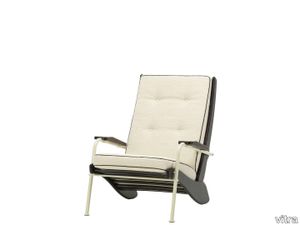
vitra > Chair
Vitra has reissued the Fauteuil Kangourou in collaboration with Catherine Prouvé, the daughter of Jean Prouvé. In the second limited edition, the lounge chair pairs a dark oak base structure with metal legs in the original hue Prouvé Blanc Colombe; the cushions are covered in a softly woven, light-coloured bouclé fabric with contrasting dark brown piping.<br/><br/>Fauteuil Kangourou is limited to 100 pieces in this version and is only available directly from Vitra.
Key Ring - Elephant
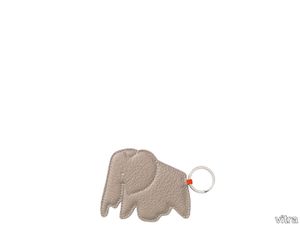
vitra > Styling
For the Key Ring motif, Dutch designer Hella Jongerius took her inspiration from an emblematic image in the history of Vitra: the elephant. It served as a model for a playful decorative object created by Charles and Ray Eames back in the 1940s, which was recently reissued by Vitra. The Key Rings are made of high-quality Vitra furniture leather with pleasant tactile qualities.
Akari 1N

vitra > Styling
The Akari Light Sculptures (1951) by Isamu Noguchi are a series of luminaires, handcrafted from traditional washi paper by Japanese artisans. ‘The harshness of electricity is thus transformed through the magic of paper back to the light of our origin – the sun.’ (Noguchi)
Coconut Chair
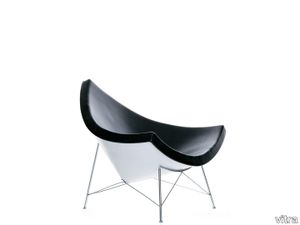
vitra > Chair
The comparison of the Coconut Chair to an eighth of a sectioned coconut goes back to the designer himself, George Nelson – a prominent exponent of American mid-century modernism. However, the colour scheme of this iconic, spacious lounge chair is reversed: the outside of the plastic shell is white, while the comfortable one-piece upholstery is covered in high-quality leather or fabric in a variety of colours.
Eames Fiberglass Side Chair LSR
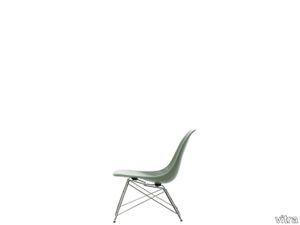
vitra > Chair
The compact LSR chair is a member of the extensive family of Fiberglass Chairs and was a favourite of Charles and Ray Eames: they utilised several throughout their legendary home, the Eames House in Pacific Palisades, particularly as seating options for conversations with guests. Unlike the Plastic Chair LSR, the Fiberglass Chair LSR is only suited for indoor use.
ID Soft
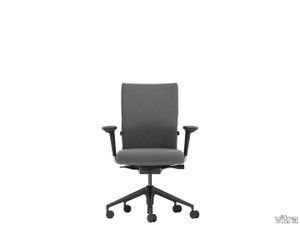
vitra > Chair
The fully upholstered backrest of ID Soft ensures a high level of comfort, while its clean lines and reductive forms lend the chair an understated presence. ID Soft therefore blends in perfectly with diverse architectural environments. Thanks to its height-adjustable backrest, ID Soft provides adequate support in the upper shoulder region for even very tall users.
Ronan Bouroullec Drawing Poster, green
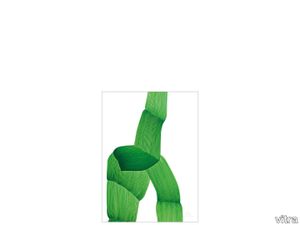
vitra > Styling
The drawings of Ronan Bouroullec exemplify the practice of 'intuitive drawing', derived from Surrealism's literary roots and its écriture automatique.
Miniatures Heart-Shaped Cone Chair
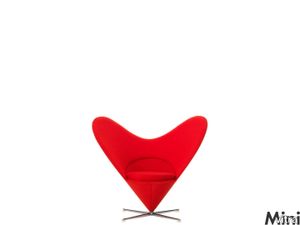
vitra > Styling
In the thirties and forties, Scandinavian design followed the principles of functionalism: simple structures, clear lines, a lightweight visual appearance. The desire for austerity of form was combined with a preference for wood as a natural material.<br/><br/>It was not until the fifties that young designers like Verner Panton began to use the formal possibilities created by innovative technologies in order to liberate furniture from the constraints of tradition. Verner Panton wrote of his works: »I try to forget existing examples, even if they are well made, and find my own way of coming to terms with the materials. The result seldom has four legs, not because I do not want to make a chair but because working with new materials like wire mesh and polyester demands new forms.« <br/><br/>The Heart Shaped Cone Chair embodies the transformation that took place in Scandinavian design in the late fifties. The purist furniture of lassical modernism was now joined by sculptural forms inspired by the new technologies. At the same time, the shape and color of the Cone Chair anticipate the »Pop Art« furniture of the sixties.
Compas Direction
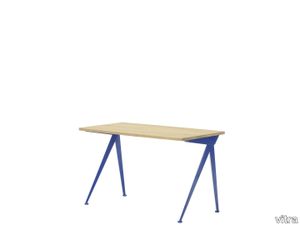
vitra > Table
The slender, elegantly splayed legs of Compas Direction, designed by Jean Prouvé in 1953, call to mind the hinged arms of a compass – 'le compas' in French. With its compact dimensions, the desk is ideal for the contemporary home office.
Grand Sofà Ottoman
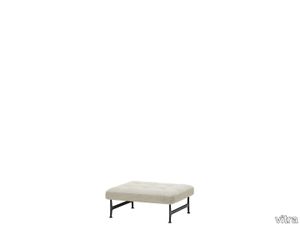
vitra > Pouf
Grand Sofà (2017) is Antonio Citterio's interpretation of luxurious comfort and contemporary design. The designer's Italian flair for lightness and elegance is united with the trademark quality and precision of the Swiss company Vitra.
Miniatures DCW

vitra > Styling
In 1940, Charles Eames and Eero Saarinen developed a chair with a novel plywood seat molded into a three-dimensional form for a competition sponsored by the New York Museum of Modern Art. However, it was not possible to produce the chair commercially, due to inadequate technical methods. It was seldom possible to press the plywood into a three-dimensional form without it breaking or splitting. During the following years, Charles and Ray Eames concentrated their efforts on developing a new method.<br/><br/>The plywood chairs DCW (Dining Chair Wood) and LCW (Lounge Chair Wood) are the result of this long-term experimentation. In 1945, Charles and Ray Eames returned to the idea of a seating shell made out of molded plywood; however the results were unsatisfying. They dispensed with the multifunctional shell and divided the seat and back into separate, freely articulated elements connected by a spine (frame). Each element has a clearly defined function, which it fulfills optimally with a minimum amount of material. »Shock mounts« – rubber disks bonded onto the wooden surface – connect the seat and back with the frame, which exists in wood or metal and in two different heights, either as a dining chair or lounge chair.
Eames Fiberglass Armchair DAR

vitra > Chair
The so-called Eiffel Tower base of the DAR (Dining Height Armchair Rod Base), an intricate and graceful construction made of steel wire, combines light, elegant forms with structural strength. For enhanced comfort, Eames Fiberglass Chairs are also available with an optional seat cushion.
Miniatures Sitzmaschine

vitra > Styling
Around 1900, the Viennese architects discovered a new means of expression in the bentwood technique. To them, the simple forms of classic bentwood furniture - a consequence of industrial production - anticipated the new aesthetic clarity they were promoting.<br/>Josef Hoffmann's Armchair No 670 combines the austere elegance of bentwood with the expressive formal vocabulary of the Viennese Secession. Its somewhat voluminous form, strict geometry, and adjustable back are attributes that suggest associations with the machine.
Aluminium Chairs EA 101/103/104 – Dine
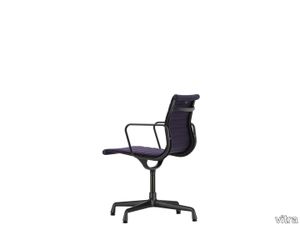
vitra > Chair
The Aluminium Chairs EA 101, EA 103 and EA 104 by Charles and Ray Eames are ideal for using in combination with tables: in comparison to the other models in the Aluminium Group, they are somewhat lighter, narrower and higher. Thanks to the wide selection of subdued or bright upholstery colours, it is easy to find the perfect chair for any dining room interior. The three models differ in the type of base – fixed or swivel – and whether they come with armrests.
Akari 1AY
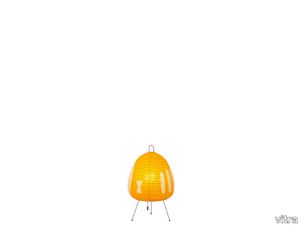
vitra > Styling
The Akari Light Sculptures (1951) by Isamu Noguchi are a series of luminaires, handcrafted from traditional washi paper by Japanese artisans. ‘The harshness of electricity is thus transformed through the magic of paper back to the light of our origin – the sun.’ (Noguchi)
Metal Wall Relief Little Heart, red
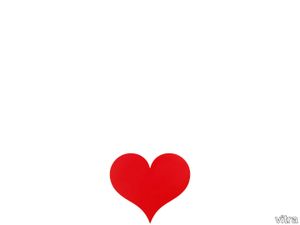
vitra > Styling
The Metal Wall Reliefs are ornamental examples of wall decorations created by Alexander Girard for various interior design projects, such as The Compound restaurant, exhibitions and his own house in Santa Fe. One of the most frequent symbols in his work, the heart shape is used as a recurring pattern on textiles and cushion covers, as a decorative wall element and for much more. In cooperation with the Girard family, Vitra has selected several of the original motifs for the reliefs, which are made from robust metal materials.
Miniatures Ball Chair
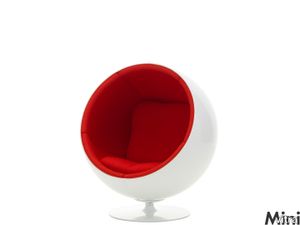
vitra > Styling
With its simple, striking shape and its bright colors Eero Aarnio's Ball Chair is a typical symbol of the optimistic, consumer-oriented popular culture of the 1960s. Equally apparent is an unconcealed enthusiasm for the technical which also typifies the era: its exposed plastic which allowed even complex shapes to be produced in series relatively easily, at the time something completely new, and its dynamic shape, reminiscent of a space capsule. <br/><br/>The idea of this kind of mobile capsule allowing people to sit where they want within the house also anticipates the kind of living concepts discussed in the 1970s for a young, liberal society. On the outside, this gleaming, polished sphere seems cold and futuristic, but its inside reveals a space where users can feel cozy and protected. From the inside outside noise is considerably muffled, allowing users to relax in any number of positions, for example, to sit cross-legged. Mounted on a round metal base just above ground level, the sphere can be completely rotated on its own axis, so that users can vary their view from the »cave«. Ball Chair thus represents a special category of household objects. It is something between a piece of furniture and a piece of architecture and at the same time embodies both the mobile and the established, the fixed.
Soft Modular Sofa Three-seater, Ottoman
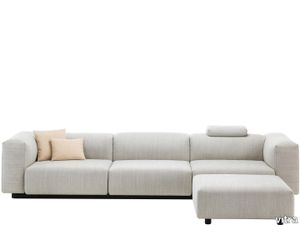
vitra > Sofa
With carefully balanced proportions, great comfort and a conscious renunciation of decorative details, the Soft Modular Sofa (2016) by Jasper Morrison unites the characteristics of a modular lounge sofa in its purest form.
Alcove Cabin
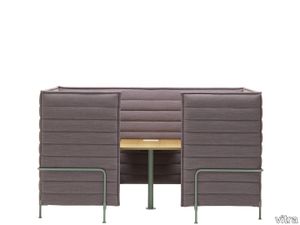
vitra > Sofa
Alcove's product features extend beyond the properties of a simple piece of furniture: with side and back panels in various heights, Alcove units form rooms within a room, creating ideal spaces for concentrated work or for small meetings.<br/><br/>Alcove Cabin creates a secluded space, which is enclosed on all sides and accessible through a single opening. It provides visual and acoustic privacy for two to four people. On the inside, Alcove Cabin has facing upholstered seats and can be optionally equipped as a full-fledged workspace with a table, power connections and the prerequisites for monitor installation.
Colour Block Blankets
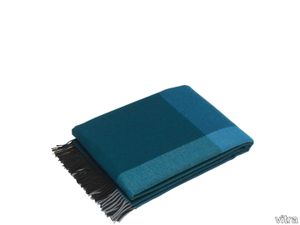
vitra > Styling
Four contrasting colour blocks form the decorative overall pattern of the Colour Block Blankets by Hella Jongerius. This snug blanket is made of Peruvian highland wool from a hybrid breed of sheep: a cross between a Merino, whose wool is extremely soft, and a Corriedale, which is known for its sturdy fibres.
Terracotta Pot, small
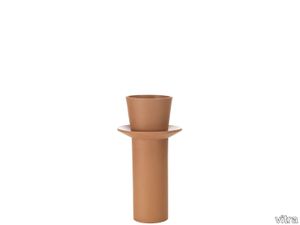
vitra > Styling
The column-like forms of the different sized Terracotta Pots serve as pedestals for the plants they hold, elevating them and giving them more presence in the room.
Happy Bin RE Small

vitra > Styling
The new high-quality recycled material used to make Happy Bin RE stems from Germany's 'Yellow Bag' (Gelber Sack) collection of household waste, from which used plastic packaging is sorted, cleaned, shredded and upcycled back into injection-mouldable polypropylene. Due to its composition, the recycled material is interspersed with tiny specks of pigment. These subtle colour variations perfectly complement the slightly irregular shape of the wastepaper bin: Swiss designer Michel Charlot was inspired by a Hans Arp sculpture when creating Happy Bin RE, which brings an unusual organic design language to the typically austere office.
Eames Plastic Side Chair DSS-N
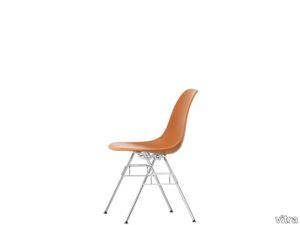
vitra > Chair
The Plastic Chairs by Charles and Ray Eames are counted among the most important furniture designs of the twentieth century. The organic shape of the shell provides a very comfortable seat, and this large family of chairs includes a stackable version: DSS-N (Dining Height Side Chair Stacking Base Non-Link). This model is especially suited for spaces in which flexibility is a high priority.
Wooden Side Tables
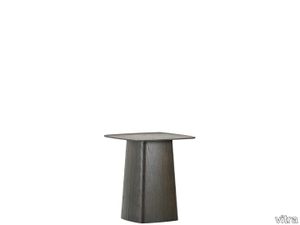
vitra > Side table
The design of the Wooden Side Tables corresponds to the Metal Side Tables created for Vitra by Ronan and Erwan Bouroullec in 2004. Like the latter, these wooden occasional tables derive their appeal from the contrast between their gracefully thin table tops and the voluminous plinth-like bases. As a distinctive feature, the plywood table tops are gently moulded around the edges to form a slight lip, which lends them an elegant, almost Japanese aura.<br/><br/>The Wooden Side Tables are available in three sizes. Together with the <a href="/en-me/product/metal-side-table">Metal Side Tables</a>, they comprise a family of occasional tables that can be used and combined in myriad ways. With a face veneer in natural oak, dark oak or walnut, they bring an inviting, natural aesthetic to this group – and thanks to the plywood material, they are light and mobile.
Wall Clocks - Spindle Clock
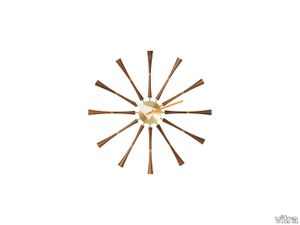
vitra > Styling
With his collection of Wall Clocks (1949-1960), George Nelson conceived a wide array of timepieces, many of which have since become icons of 1950s design.
Unix Chair, four-legged base

vitra > Chair
The Unix Chair by Antonio Citterio is available with a classic four-legged base in polished aluminium. Thanks to its discreet design, the Unix Chair can be used in meeting and visitor areas in virtually every office environment. The version with castors offers added mobility for more versatile use.
Zoo Timers - Elihu the Elephant
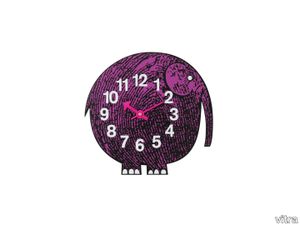
vitra > Styling
The Zoo Timers (1965) by George Nelson – wall clocks in the form of colourfully hand-drawn characters from the animal kingdom – offer children a playful and enjoyable approach to telling the time.
Coffee Table
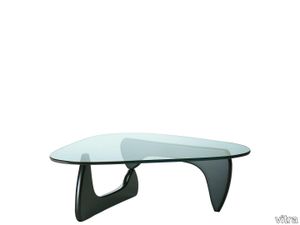
vitra > Coffee table
In creating his design for the Coffee Table, Isamu Noguchi translated the biomorphic aesthetic of his sculptural works into a piece of furniture with distinctive organic forms. Presumably for this reason, Noguchi regarded the table as his best furniture design. Two wooden leg elements, which are available in black ash, maple or walnut, are positioned at a right angle to provide a stable support for the heavy, sturdy glass top.
Landi Chair
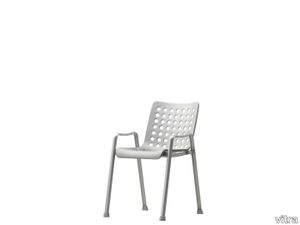
vitra > Chair
Technical innovation, optimal use of materials, minimalist forms and understated elegance have made the Landi Chair (1938) by Hans Coray a classic that looks as fresh and vital today as ever.
Girard Ornaments - Star

vitra > Styling
The range of motifs does not limit the use of Ornaments by Alexander Girard to seasonal occasions but a number of them are perfect, for example, for Christmas time.
Girard Ornaments - Heart
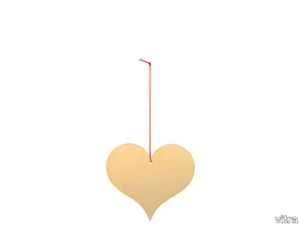
vitra > Styling
The range of motifs does not limit the use of Ornaments by Alexander Girard to seasonal occasions but a number of them are perfect, for example, for Christmas time.
Physix Conference
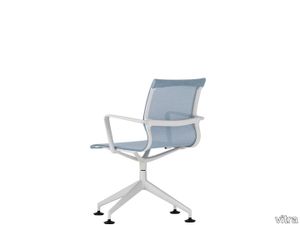
vitra > Chair
Physix Conference provides dynamic seating and lasting comfort, even without the mechanical adjustment options of the Physix office chair, thanks to its flexible seat frame and elastic textile cover in knit or woven fabric. The chair is an excellent choice for conference and meeting areas in which understated elegance is the key image.
Suita Club Armchair

vitra > Chair
The Suita Club Armchair by Antonio Citterio can be combined with any member of the Suita sofa family. Thanks to its elegantly understated design, the armchair can be used on its own or paired with many other sofas. It is generously upholstered, ensuring excellent comfort even without additional cushions.
Physix Studio

vitra > Office Chair
Physix Studio is the reductive combination of an elegant seat structure with a height-adjustable five-star base on castors. The functional features of the lightweight Physix Studio office chair make it ideal for the contemporary home office and its emphasis on understated aesthetic, without having to compromise on ergonomy and comfort.
Akari UF4-L10
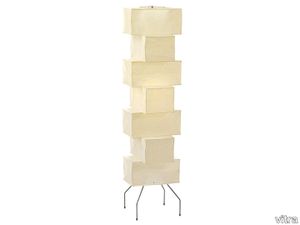
vitra > Styling
The Akari Light Sculptures (1951) by Isamu Noguchi are a series of luminaires, handcrafted from traditional washi paper by Japanese artisans. ‘The harshness of electricity is thus transformed through the magic of paper back to the light of our origin – the sun.’ (Noguchi)
Uten.Silo I
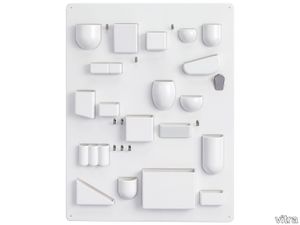
vitra > Styling
Designed by Dorothee Becker, Uten.Silo (1969/70) brings order to offices, kitchens, workshops, bathrooms and children's rooms. It is available in two different sizes and three colour options: white, black or red.
Akari 9AD
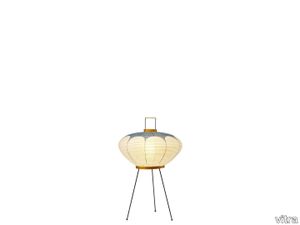
vitra > Styling
The Akari Light Sculptures (1951) by Isamu Noguchi are a series of luminaires, handcrafted from traditional washi paper by Japanese artisans. ‘The harshness of electricity is thus transformed through the magic of paper back to the light of our origin – the sun.’ (Noguchi)
Miniatures DSW
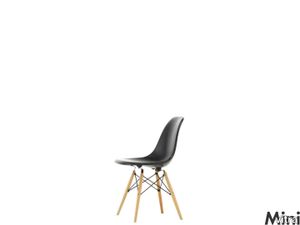
vitra > Styling
The Fiberglass Chairs are rare examples of a satisfying synthesis of formal and technical innovation. For the first time in the history of design, Charles and Ray Eames utilized malleability of plastic for the development of a comfortable seating shell that corresponds to the shape of the human body. <br/><br/>The idea of making a three-dimensional molded shell goes back to a design from 1940. The original attempt to make the shell out of plywood was unsuccessful, however, due to the extreme conditions necessary to mold the material. Only with the advent of fiberglass technology was it possible to achieve satisfying results. <br/><br/>The first Fiberglass Chair went into production in 1950. After years of experimentation, Charles and Ray Eames were able to realize their goal: an industrially produced chair that is inexpensive, sturdy, and comfortable. For ecological reasons however fibreglass was questionably. Thanks to recent advances in technology and materials, the DSW can be produced today in exact the same shape but made of polypropylene.
Polder Compact
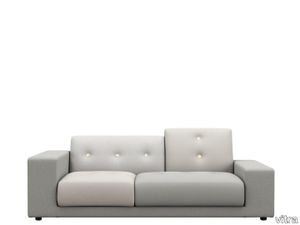
vitra > Sofa
The distinctive character of Hella Jongerius's comfortable Polder Sofa derives from the combination of diverse fabrics and colours, an asymmetrical shape and charming details.
Suita Club Sofa

vitra > Sofa
The Suita Club Sofa was developed for use in offices, waiting areas and lobbies. The construction and workmanship are designed to withstand the demanding conditions of such public areas. The upholstery of the backrest ensures a high degree of comfort without the need for additional cushions.
Lobby Chair ES 105
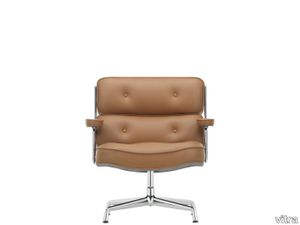
vitra > Chair
The Lobby Chairs were originally designed by Charles and Ray Eames to furnish lobby areas in New York City's Time & Life Building. All three models in this seating group offer supreme comfort with their luxuriously padded leather cushions, including the inviting visitor chair ES 105, which has an extra-wide seat and low base. The leather upholstery is available in a wide range of colours.
Fauteuil Direction

vitra > Chair
Fauteuil Direction is especially suited for dining room seating or as an armchair in home offices. The design reflects Jean Prouvé's characteristic aesthetic vocabulary, which is based on structural requirements. The comfortably upholstered armchair is available with fabric or leather covers in a selection of different colours.
Akari 15A
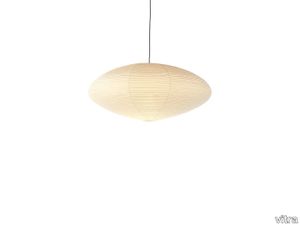
vitra > Styling
The Akari Light Sculptures (1951) by Isamu Noguchi are a series of luminaires, handcrafted from traditional washi paper by Japanese artisans. ‘The harshness of electricity is thus transformed through the magic of paper back to the light of our origin – the sun.’ (Noguchi)
ID Soft L

vitra > Chair
The high backrest of ID Soft L comes with padded upholstery for excellent comfort. Although the chair exudes elegant sophistication, its sleek lines and minimal design also lend it an understated character. ID Soft L can be harmoniously combined with other chairs and is a perfect addition to many different settings.
Grand Sofà 2½-Seater
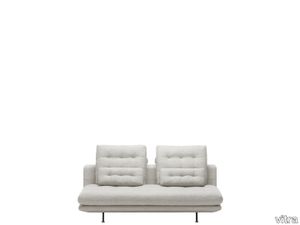
vitra > Sofa
Grand Sofà (2017) is Antonio Citterio's interpretation of luxurious comfort and contemporary design. The designer's Italian flair for lightness and elegance is united with the trademark quality and precision of the Swiss company Vitra.
Plywood Mobile, Model B
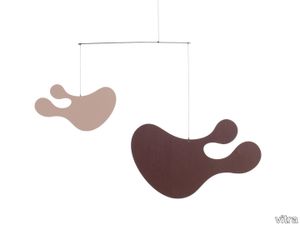
vitra > Styling
The Plywood Mobiles, whose shapes are strongly reminiscent of Ray's artwork and graphics, were hung from the ceiling of the Eameses' apartment in Los Angeles.
Wooden Doll Little Devil

vitra > Styling
The new Little Devil may not be the most imposing of the Wooden Dolls in terms of size, but with its bright red color and mischievous, saucy expression, it still looks more than capable of a few devilish pranks.